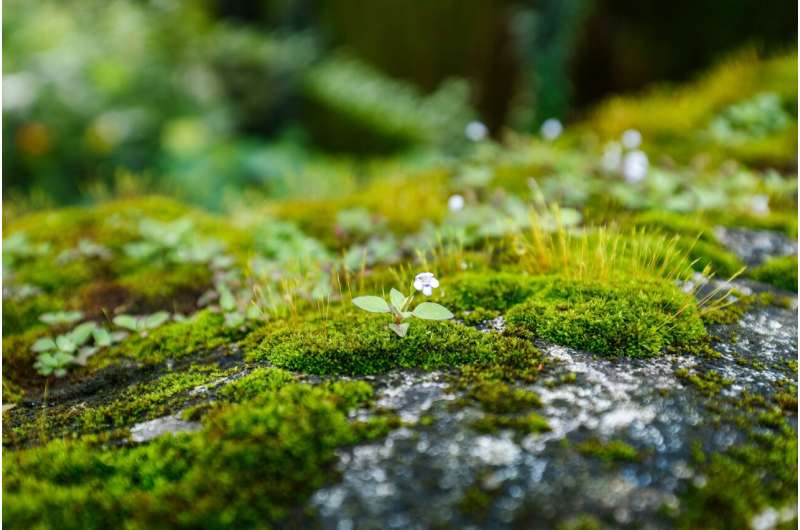This article has been reviewed according to Science X's editorial process and policies. Editors have highlighted the following attributes while ensuring the content's credibility:
fact-checked
trusted source
proofread
Study shows moss could have starring role in pollution monitoring

A unique experiment that began in Aberdeen during the COVID-19 pandemic has revealed how the humble moss could be used by citizen scientists to monitor air pollution levels in urban environments worldwide.
Thomas Daniya, a Ph.D. student at the University of Aberdeen, had intended to investigate how the common plants could help measure Polycyclic Aromatic Hydrocarbons (PAH) levels in various cities but pandemic travel restrictions prevented him from doing so.
Instead he focused his research on Aberdeen where he collected moss samples from local parks and other public spaces to act as natural sampling devices to measure levels of PAH, a major air pollutant caused by traffic. The results, which revealed surprising levels of PAH in residential areas when traffic restrictions were lifted, have been published in Frontiers in Geochemistry.
Mosses get their water and nutrition from the air and not their root systems, meaning they are very efficient at collecting airborne pollutants such as PAH.
By using moss Thomas found a convenient and novel way to track PAH levels without the need to set up additional sampling devices, thereby simplifying the data collection process. And by measuring the samples when restrictions were enforced, he was able to record patterns in PAH levels linked to fluctuations in travel activities.
As well as revealing the scale at which travel activities affected pollution levels in Aberdeen, the experiment has shown that mosses can be easily collected by anyone residing in urban areas and used to assess the presence of PAH. This creates an opportunity for citizen scientists to play an important role in monitoring air quality in towns and cities worldwide.
Furthermore, the results provide an insight into the likely effects of the introduction of low emission zones in cities like Aberdeen.
Thomas said, "When travel restrictions were enforced, car usage significantly decreased. So each fluctuation in Aberdeen's COVID-19 restriction level became an unplanned experiment, allowing me to examine the impact of cars and traffic on PAH.
"One of the most intriguing findings was the variations between different localities. While I anticipated that roadside mosses would contain significant levels of PAH, the same was true of residential areas when restrictions lifted and regular travel activity resumed.
"In some of these residential areas the PAH levels in mosses went from very low to having as much PAH as mosses growing next to busy roads, which was very surprising and demonstrates just how much impact individual travel decisions can have on local air quality."
Thomas's Ph.D. supervisor, Dr. Stephen Bowden, added, "Thomas's research highlights the potential for mosses as accessible and efficient indicators of urban air quality, providing valuable insights into the effects of travel restrictions on pollution levels.
"This innovative approach creates new opportunities for widespread monitoring of PAH by citizen scientists, which could lead to a deeper understanding of the connection between individual behaviors and environmental quality.
"This could be especially useful in terms of measuring the potential impact of low emission zones and other environmental initiatives in town and cities worldwide, contributing to the evidence available to policymakers responsible for improving local air quality."
More information: Thomas S. Daniya et al, The perturbation of PAHs on mosses in Aberdeen, Scotland, as a consequence of social restrictions imposed during the COVID-19 pandemic, Frontiers in Geochemistry (2024). DOI: 10.3389/fgeoc.2023.1320096
Provided by University of Aberdeen





















